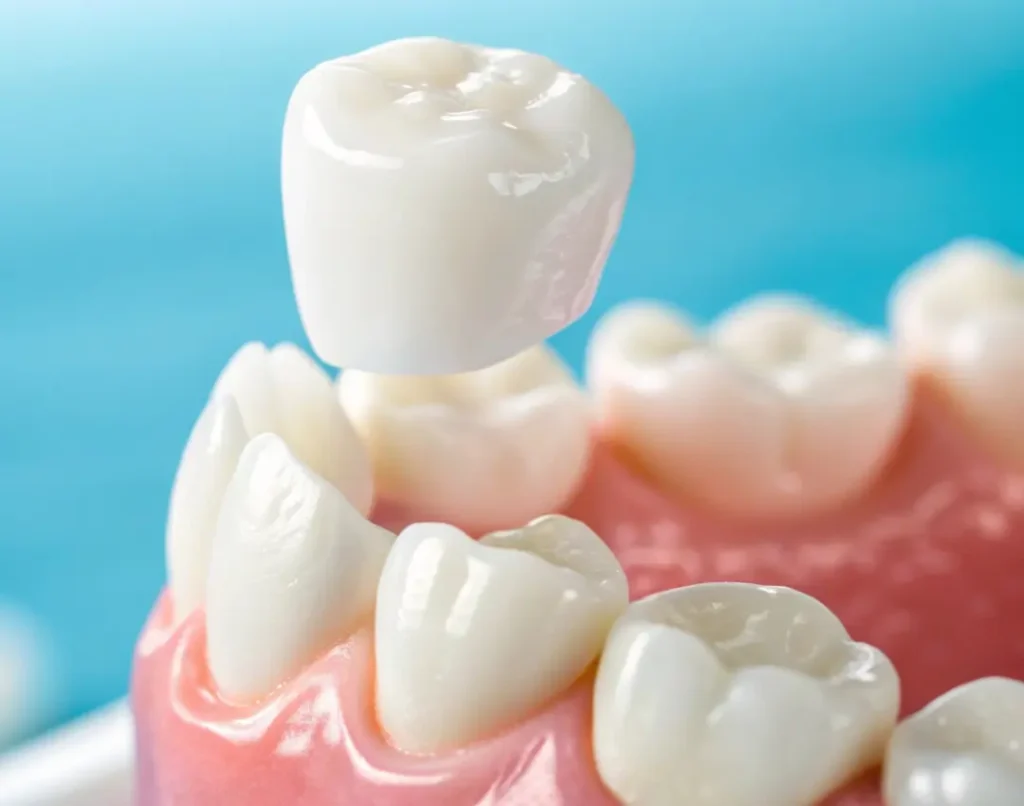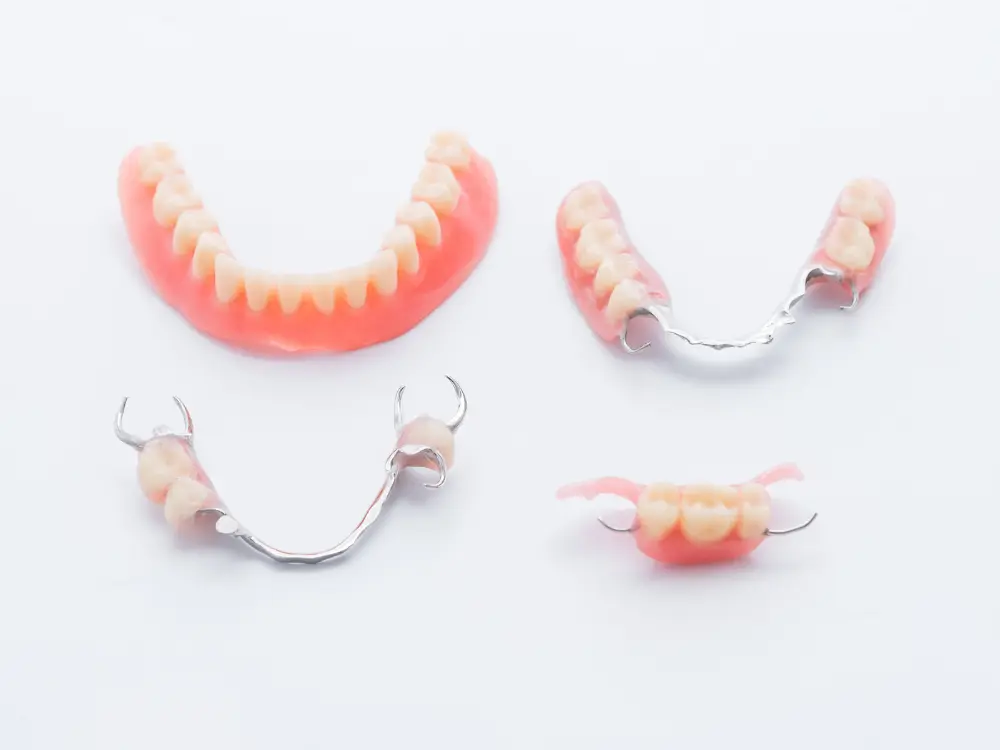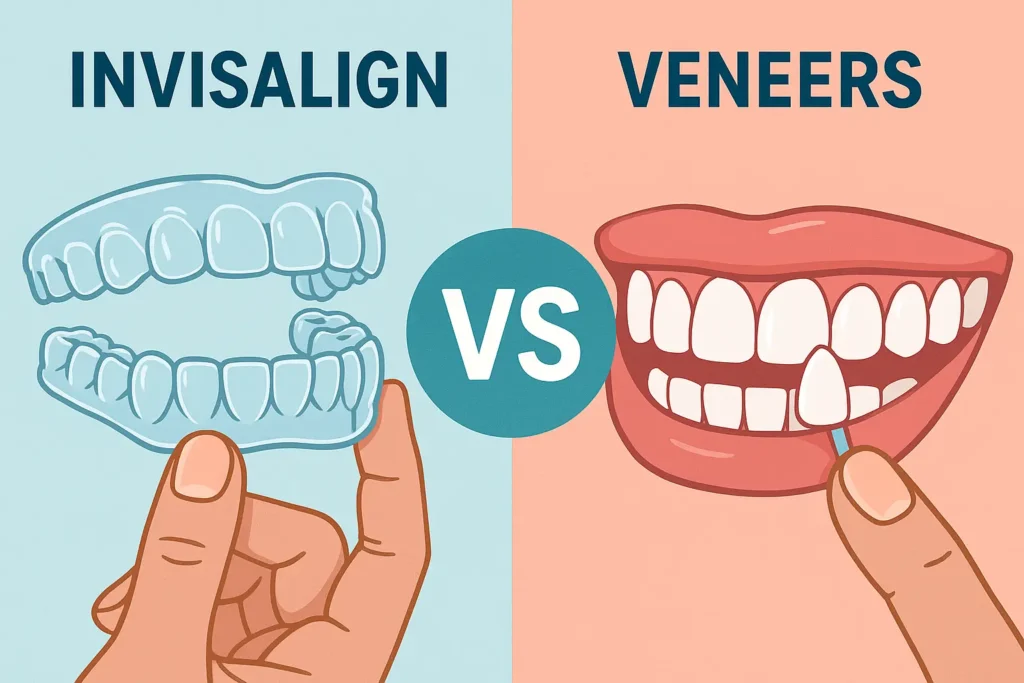By Dr. Kamal Kiswani, Dev’s Oral Care
After 16 years of transforming smiles in Pune, I’ve noticed something interesting. When patients walk into my clinic asking about aligners vs braces, they’re not just seeking a list of differences—they’re looking for guidance on which option will truly work for their unique situation.
Today, I want to share my perspective as both a dentist and someone who has guided hundreds of patients through this important decision.
Last week, a 28-year-old software engineer named Priya sat in my chair, her laptop bag still slung over her shoulder. “Doctor, I’ve read everything online about braces vs aligners,” she said, “but I’m more confused than ever. Everyone says something different.”
This conversation happens more often than you might think. The internet is flooded with comparison charts, but what’s missing is the human element—the real-world factors that actually matter when you’re living with orthodontic treatment every single day.
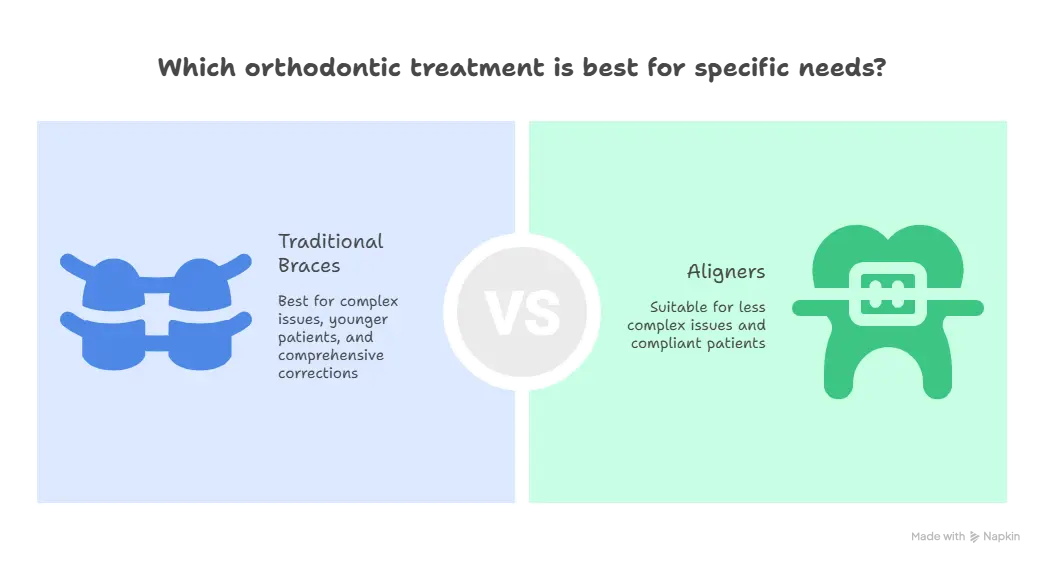
When discussing aligners vs braces which is better, I always start with a simple question: “Tell me about your typical day.” The answer reveals everything I need to know about which treatment will succeed.
Take Priya, for instance. Her days involve client presentations, networking events, and video calls. For her, the aesthetic advantage of aligners wasn’t just about vanity—it was about professional confidence. However, her habit of mindlessly snacking while coding made me pause and consider whether she’d consistently wear aligners for the required 22 hours daily.
This is where my experience with orthodontic treatment becomes crucial. I’ve seen patients choose aligners and struggle with compliance, while others thrive with traditional braces despite initial concerns about appearance.
Here’s something most comparison articles won’t tell you: the severity of your case isn’t just about “mild” or “severe.” It’s about the type of movement needed. Some seemingly complex cases respond beautifully to aligners, while certain “simple” corrections require the consistent pressure that only braces can provide.
During my training in Germany and through my fellowship with the International Congress of Oral Implantologists, I learned that successful orthodontic treatment depends on understanding the biology of tooth movement. Aligners excel at tipping movements and minor rotations, while braces have the advantage in cases requiring root movement or significant vertical adjustments.
For the Professional Who Can’t Compromise on Appearance: If you’re in a client-facing role or frequently on camera, aligners offer the aesthetic advantage you need. I’ve treated numerous executives and public speakers who needed to maintain their professional image throughout treatment.
For the Disciplined Individual: Aligners require what I call “orthodontic discipline.” You need to remove them for eating, clean them regularly, and wear them 22 hours a day. If you’re someone who thrives on routine and personal responsibility, aligners can be incredibly effective.
For Specific Types of Corrections: Aligners work exceptionally well for:
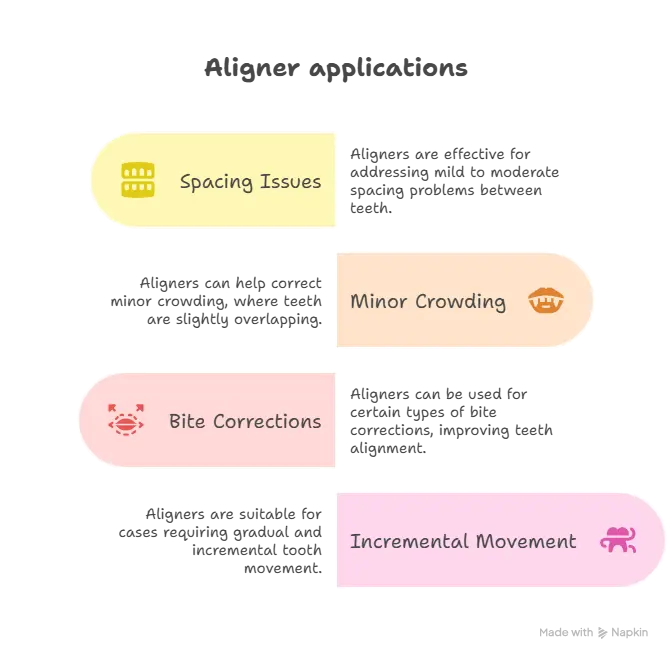

For Complex Bite Issues: Some orthodontic problems require the consistent, 24/7 pressure that only braces can provide. I’ve seen cases where patients initially wanted aligners but achieved better results with braces.
For Younger Patients: Teenagers often do better with braces simply because compliance isn’t an issue. The braces do their work regardless of the patient’s daily habits.
For Comprehensive Corrections: When we need to rotate teeth significantly, close large gaps, or move teeth vertically, braces often provide more predictable results.
When patients ask about braces vs aligners, they often focus on treatment duration. But here’s what I’ve observed: the “speed” of treatment depends more on compliance and case complexity than the method chosen.
I’ve seen aligner cases complete faster than predicted because the patient was diligent about wear time and maintenance. Conversely, I’ve treated patients who prolonged their treatment by not wearing aligners consistently or by poor oral hygiene with braces.
With aligners, you’re essentially getting a new appliance every two weeks. This sounds convenient, but it requires a level of organisation and responsibility that some patients underestimate. You need to:
Traditional braces, while requiring different maintenance, don’t depend on your daily compliance in the same way.
At Dev’s Oral Care, I utilise digital dentistry to provide patients with a clear visual representation of their treatment options. This isn’t just about seeing the end result—it’s about understanding the journey.
I take digital impressions, create 3D models, and utilise advanced imaging to show patients how their teeth will shift over time. This technological approach, combined with my expertise in cosmetic dentistry, enables patients to make informed decisions.
Comfort means different things to different people. Some patients find the removability of aligners comforting—they can take them out for special occasions. Others prefer the “set it and forget it” nature of braces.
I always remind my patients that both options involve some discomfort, especially during the first few days and after adjustments. The key is understanding what type of discomfort you’re more likely to tolerate.
Whether you choose aligners or braces, retention is crucial. I’ve seen patients complete beautiful orthodontic treatment only to watch their teeth shift back because they didn’t follow retention protocols.
Interestingly, patients who choose aligners often adapt more easily to wearing retainers because they’re already accustomed to removable appliances. However, this varies greatly among individuals.
As someone who practices comprehensive dentistry, I always consider how orthodontic treatment fits into your overall oral health plan. Sometimes, combining orthodontics with other treatments like dental crowns and bridges or dental implants can provide better long-term results.
When helping patients choose between aligners and braces, I use a simple framework:
For patients who are truly unsure, I sometimes suggest starting with aligners for carefully selected cases. If compliance becomes an issue or if treatment isn’t progressing as expected, we can transition to braces. This flexibility is part of personalised care.
To help you visualise the key differences, here’s a comprehensive comparison based on my clinical experience:
Factor | Clear Aligners | Traditional Braces |
Appearance | Nearly invisible, clear plastic | Visible metal brackets and wires |
Removability | Removable for eating, cleaning | Fixed to teeth for the entire treatment |
Eating Restrictions | None (remove before eating) | Avoid hard, sticky, crunchy foods |
Oral Hygiene | Easy – remove for brushing/flossing | More challenging – need special tools |
Comfort | Smooth plastic, no sharp edges | Initial discomfort from brackets/wires |
Treatment Duration | 12-18 months (average) | 18-24 months (average) |
Office Visits | Every 6-8 weeks | Every 4-6 weeks |
Compliance Required | High – must wear 22 hours/day | Low – works automatically |
Best For | Mild to moderate corrections | All types, especially complex cases |
Cost Range | ₹1,50,000 – ₹3,00,000 | ₹80,000 – ₹2,00,000 |
Age Suitability | Teens and adults | All ages (6+ years) |
Emergency Visits | Rare | More frequent (broken brackets/wires) |
Speech Impact | Minimal initial lisp | Temporary speech changes |
Professional Impact | Minimal visual impact | Noticeable during treatment |
Maintenance | Clean aligners daily | Special brushing techniques |
Effectiveness | Excellent for specific cases | Proven for all orthodontic issues |
Note: Costs mentioned are approximate and vary based on case complexity and location.
After years of practice and thousands of successful treatments, I’ve learned that the question isn’t really aligners vs braces, which is better. It’s about which option aligns with your lifestyle, personality, and specific orthodontic needs. It is not about better or worse.
Both aligners and braces can create beautiful, healthy smiles when used appropriately. The key is choosing the right tool for your unique situation and committing to the process.
Not sure which option suits you best? Take this quick quiz to get personalised guidance based on your lifestyle and preferences:
Quiz: Should You Choose Aligners or Braces?1. How would you describe your daily routine? ☐ A) Highly structured – I follow the same schedule every day ☐ B) Flexible – My schedule changes frequently ☐ C) Unpredictable – I often forget things or lose track of time 2. What’s your profession/daily environment? ☐ A) Client-facing role, presentations, or public speaking ☐ B) Office work with occasional meetings ☐ C) Behind-the-scenes work or student 3. How disciplined are you with daily habits? ☐ A) Very disciplined – I never miss my routine ☐ B) Moderately disciplined – I’m good most of the time ☐ C) I struggle with consistency 4. What’s your biggest concern about orthodontic treatment? ☐ A) People noticing I’m wearing something ☐ B) The treatment taking too long ☐ C) The cost and maintenance 5. How do you handle removable items (like contact lenses, retainers)? ☐ A) I’m great with them – never lose or forget ☐ B) I manage okay but sometimes forget ☐ C) I tend to lose or forget removable items 6. What’s your eating pattern? ☐ A) Regular meals at set times ☐ B) Occasional snacking between meals ☐ C) Frequent snacking throughout the day 7. How important is convenience in your daily routine? ☐ A) I prefer “set it and forget it” solutions ☐ B) I don’t mind some daily maintenance ☐ C) I like having control over my treatment 8. What’s your age group? ☐ A) Teen (13-18 years) ☐ B) Young adult (19-30 years) ☐ C) Adult (30+ years) |
If you chose mostly A’s: 🦷 ALIGNERS might be perfect for you! You’re disciplined, professional, and value aesthetics. Your structured routine will help you maintain the 22-hour wear requirement. Your lifestyle demands discretion, making aligners an ideal choice.
If you chose mostly B’s: 🤔 EITHER option could work for you! You’re in the middle ground where both treatments have merit. I’d recommend a detailed consultation to discuss your specific case complexity and personal preferences. Your moderate discipline means you could succeed with either option.
If you chose mostly C’s: 🦷 BRACES might be your best friend! You’ll benefit from the “automatic” nature of braces. Since they’re fixed to your teeth, you don’t need to worry about compliance or losing them. This option works regardless of your daily habits.
Note: This quiz provides general guidance based on lifestyle factors. Your specific orthodontic needs, case complexity, and oral health status are equally important in making the final decision.
If you’re considering orthodontic treatment, I encourage you to:
The best orthodontic treatment is the one you’ll actually complete successfully. Whether that’s aligners or braces depends on you—your lifestyle, your commitment level, and your specific dental needs.
At Dev’s Oral Care, we believe every patient deserves personalized attention and honest guidance. After all, your smile is an investment in your confidence, health, and future.
